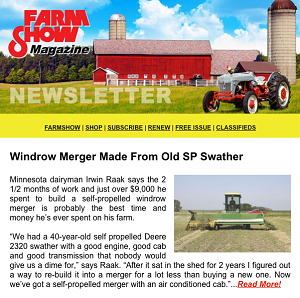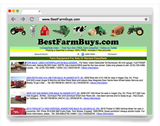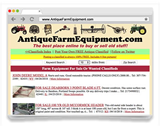Colorful Shetland Sheep “Perfect For Small Flocks”
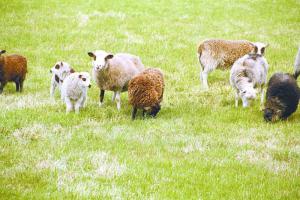 ✖  |
A sick, broken-horned Shetland sheep was the first animal on Mike and Heather Ludlam’s newly purchased farm in southwest Michigan back in the early 1990’s. Mike recalls Heather, a veterinarian, calling and saying she wanted to bring a sheep home that had been given to her by a client, who owned what was just the second flock of Shetland sheep in the U.S.
“Of course that sheep got lonely, so she gave us another with crooked horns,” Mike Ludlam says with a laugh. “Later that year we got three nice ewes and worked to correct the horn issue. Now we run 100 of them at a time.”
Once a breed that was nearly extinct, Shetland sheep now rank No. 9 in the top 10 breeds of registered sheep. Their small size, gentle personalities and great spinning wool make them appealing to small flock owners and spinners.
“These guys have so many colors and so many patterns. Lambing time is like Christmas; you don’t know what you’ll get,” says Ludlam, who is president of the North American Shetland Sheep Association (NASSA). The group’s website lists a range of 11 colors from white to fawn to dark brown as well as 30 markings with Gaelic-sounding names such as Snaelit, Bielset and Mirkface.
“My wife is a person who really enjoys the color genetics and conformation. I do the marketing of the fleece and roving,” Ludlam says, explaining that while the breed has a smaller fleece it’s more valuable. For example, a large commercial-type sheep can produce a 14-lb. fleece that sells for $1.50/lb. A good 3 1/2 to 4-lb. Shetland fleece, with 2 1/2 to 9-in. long locks perfect for spinning, sells for an average of $15/lb.
Shetland wool is among the finest of the UK breeds with a range of ultra fine for lace shawls to bulky enough for wool socks.
Because the breed originated on the rocky shores of the Shetland Islands in Scotland, they’re very efficient.
“They’re very easy on pasture, and they don’t need good quality hay,” Ludlam says, noting that some flocks are rented out for weed management. “The ewes are very hardy and good mothers.”
As one of the smallest British sheep, rams average 90 to 125 lbs., and ewes weigh 75 to 100 lbs. Rams have spiral horns. Ewes are usually polled. With naturally short tails, they don’t require docking, which the Ludlams appreciate.
They also like the Shetland’s docile nature.
“Some are like dogs and want to be petted,” he says. “Little kids can show them easier than big breeds.”
The Ludlams have traveled extensively with their children showing sheep in the U.S. and Canada. Shetland sheep do well in most places, though dark-colored sheep don’t do as well in hot climates.
Contact: FARM SHOW Followup, NASSA Registry, P.O. Box 51, 222 Main St., Milo, Iowa 50166 (www.shetland-sheep.org).
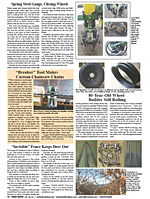
Click here to download page story appeared in.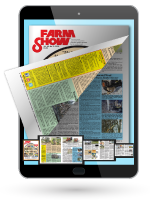
Click here to read entire issue
Colorful Shetland Sheep “Perfect For Small Flocks” A sick broken-horned Shetland sheep was the first animal on Mike and Heather Ludlam’s newly purchased farm in southwest Michigan back in the early 1990’s Mike recalls Heather a veterinarian calling and saying she wanted to bring a sheep home that had been given to her by a client who owned what was just the second flock of Shetland sheep in the U S “Of course that sheep got lonely so she gave us another with crooked horns ” Mike Ludlam says with a laugh “Later that year we got three nice ewes and worked to correct the horn issue Now we run 100 of them at a time ” Once a breed that was nearly extinct Shetland sheep now rank No 9 in the top 10 breeds of registered sheep Their small size gentle personalities and great spinning wool make them appealing to small flock owners and spinners “These guys have so many colors and so many patterns Lambing time is like Christmas; you don’t know what you’ll get ” says Ludlam who is president of the North American Shetland Sheep Association NASSA The group’s website lists a range of 11 colors from white to fawn to dark brown as well as 30 markings with Gaelic-sounding names such as Snaelit Bielset and Mirkface “My wife is a person who really enjoys the color genetics and conformation I do the marketing of the fleece and roving ” Ludlam says explaining that while the breed has a smaller fleece it’s more valuable For example a large commercial-type sheep can produce a 14-lb fleece that sells for $1 50/lb A good 3 1/2 to 4-lb Shetland fleece with 2 1/2 to 9-in long locks perfect for spinning sells for an average of $15/lb Shetland wool is among the finest of the UK breeds with a range of ultra fine for lace shawls to bulky enough for wool socks Because the breed originated on the rocky shores of the Shetland Islands in Scotland they’re very efficient “They’re very easy on pasture and they don’t need good quality hay ” Ludlam says noting that some flocks are rented out for weed management “The ewes are very hardy and good mothers ” As one of the smallest British sheep rams average 90 to 125 lbs and ewes weigh 75 to 100 lbs Rams have spiral horns Ewes are usually polled With naturally short tails they don’t require docking which the Ludlams appreciate They also like the Shetland’s docile nature “Some are like dogs and want to be petted ” he says “Little kids can show them easier than big breeds ” The Ludlams have traveled extensively with their children showing sheep in the U S and Canada Shetland sheep do well in most places though dark-colored sheep don’t do as well in hot climates Contact: FARM SHOW Followup NASSA Registry P O Box 51 222 Main St Milo Iowa 50166 www shetland-sheep org
To read the rest of this story, download this issue below or click
here to register with your account number.





